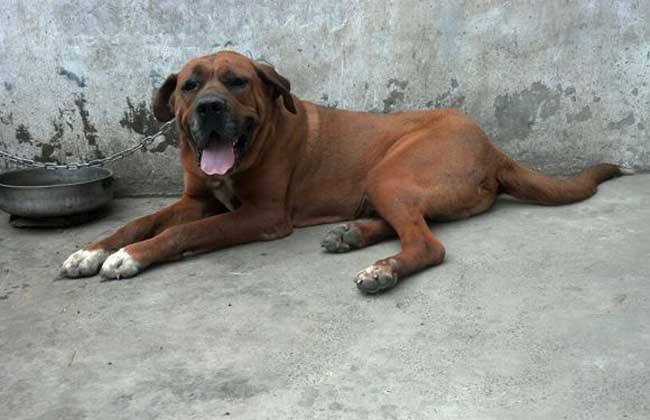土佐闘犬
IUCN
LCBasic Information
Feature
One of the most ferocious dogs in the world
Distribution and Habitat
Originated from Japan in the 19th century.
Appearance
The body is stout, muscular and full of energy. The skeleton is strong and powerful. The head is large and flat on the top. The muzzle is square. The mouth is wide and the jaw muscles are strong. The teeth are sharp. The ears are set back and hang down. The neck is thick and the skin is loose, especially the throat has dewlap. The back is straight. The front legs are straight and the hind legs are broad and strong. The base of the tail is high and the tail usually hangs down. The toes on the feet are thick. The fur is short, hard and very dense. The fur color has different degrees of reddish brown, white and red and white.
Details
The Tosa Inu is a very mysterious large-scale competitive fighting dog in Japan. After training, the Tosa Inu is known as one of the most ferocious dogs in the world, the king of oriental fighting dogs, but loyal to its owner. It is a symbol of tenacious spirit in Japan, inheriting the mystery and implicitness of the East, and absorbing the physique and appearance of Western dog breeds! Expensive! Most breeders are members of the Japanese underworld or business tycoons. An excellent Tosa Inu cannot be obtained with money.

Japan has a long history of dog fighting that began in the 14th century. Against this historical background, this breed of dog, which is a hybrid of Shikoku dogs and Western breeds, was produced. This dog is sometimes called the "Japanese Mastiff". Western dog breeds used to breed Tosa Inu include the English Bulldog (1872: the year the bloodline was added, the same applies hereafter), the English Old Mastiff (1874), the German Pointer (1876) and the Great Dane (1924) and other breeds that were added successively. According to relevant information, St. Bernard and Bulldog were also added to the Tosa Inu crossbreeding, but there is no record of the time of joining. The established appearance of the Tosa Inu shows its vigorous energy and fighting instinct, and the Mastiff-like appearance is the result of the fusion of genes from multiple dog breeds.
By the end of 1913, the breed had reached a very high level. It was called Tosa Inu, Tosa Token, Tosa Ken and other names. During World War II, due to food shortages, the Japanese government banned the breeding of dogs, and the Tosa Inu was almost extinct. It is said that only 10 remained at that time. After the war, the breed breeding was restarted. This breeding process did not end until 1960. It is huge, agile, doesn't like to bark, is fearless and very smart. The purpose of this breed is to produce a fighting dog that is invincible in dog fighting competitions.
Quiet, doesn't like to bark even when angry and fighting. Known for patience, calmness and courage. Also very smart and clean. Very gentle to family and children, and can get along well with guests. But there is a strong nature in the bones, and it is a natural fighter.
The level of Tosa Inu is judged by the duration of its fight, the quality of the opponent, the courage shown and perseverance. The longer the fight lasts, the higher the honor. If the two dogs fight bravely and do not kill each other, the fight is more respectable. This is completely opposite to American fighting dogs, where the faster a dog wins and kills the opponent, the more respected it is. Therefore, a Tosa dog that gets many quick wins will not be higher than a dog that lasts longer.
The Tosa dog is not cheap. It belongs to the fierce dog category and ranks in the top three among fierce dogs. There are very few Tosa dogs in China. Japanese Tosa dogs are divided into four fighting levels, namely Komusubi, Sekyō, Taisuna, and Yokozuna. The higher the level of the Tosa dog, the more expensive it is. The price of a domestic Tosa dog is generally about 3,000 yuan/dog, and the more expensive ones are about 5,000 yuan/dog. Compared with foreign countries, the price of domestic Tosa dogs is more affordable, while the price abroad is more expensive. A purebred Tosa dog costs about 10,000 yuan.
Protect wild animals and eliminate game.
Maintaining ecological balance is everyone's responsibility!








